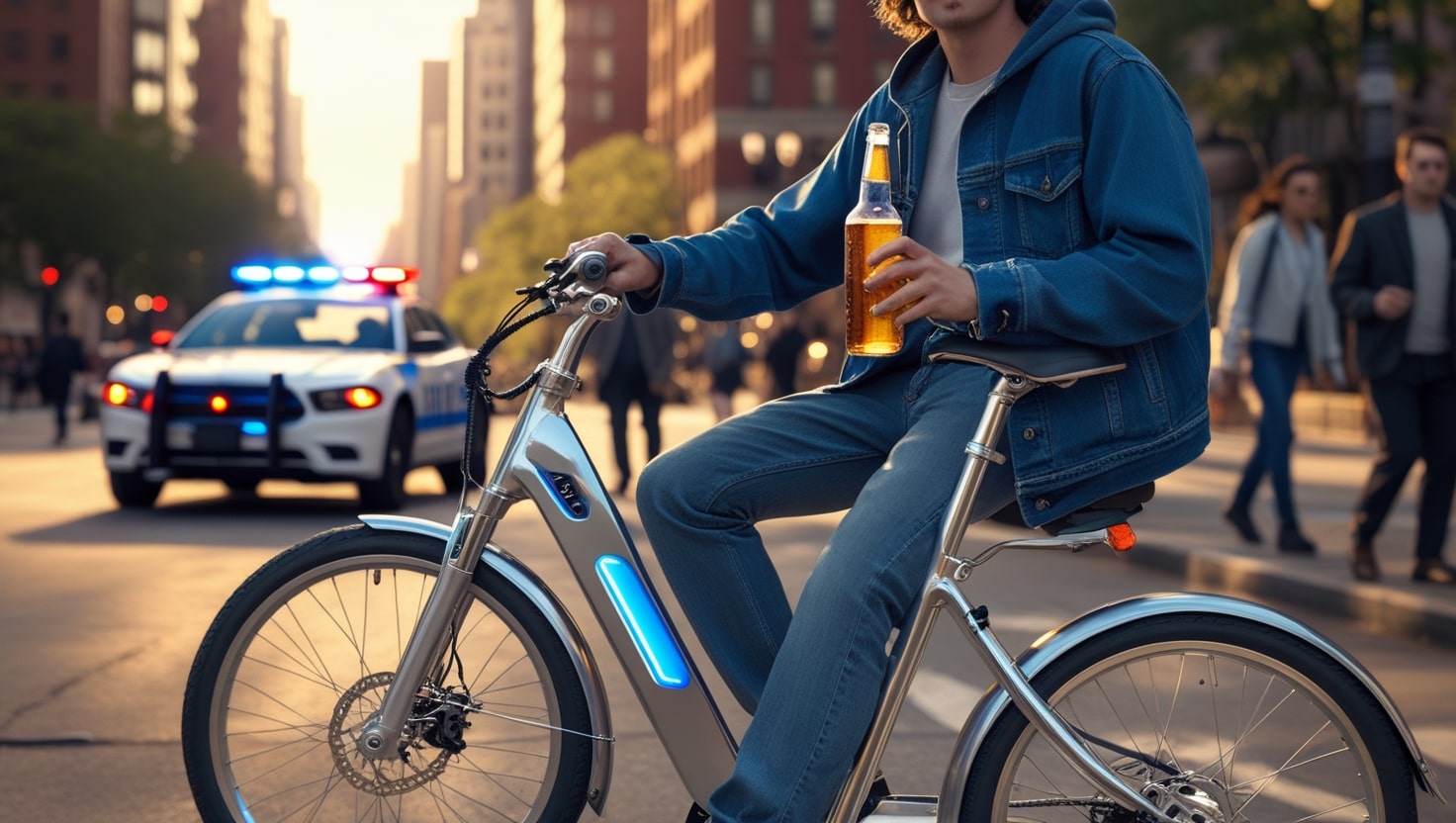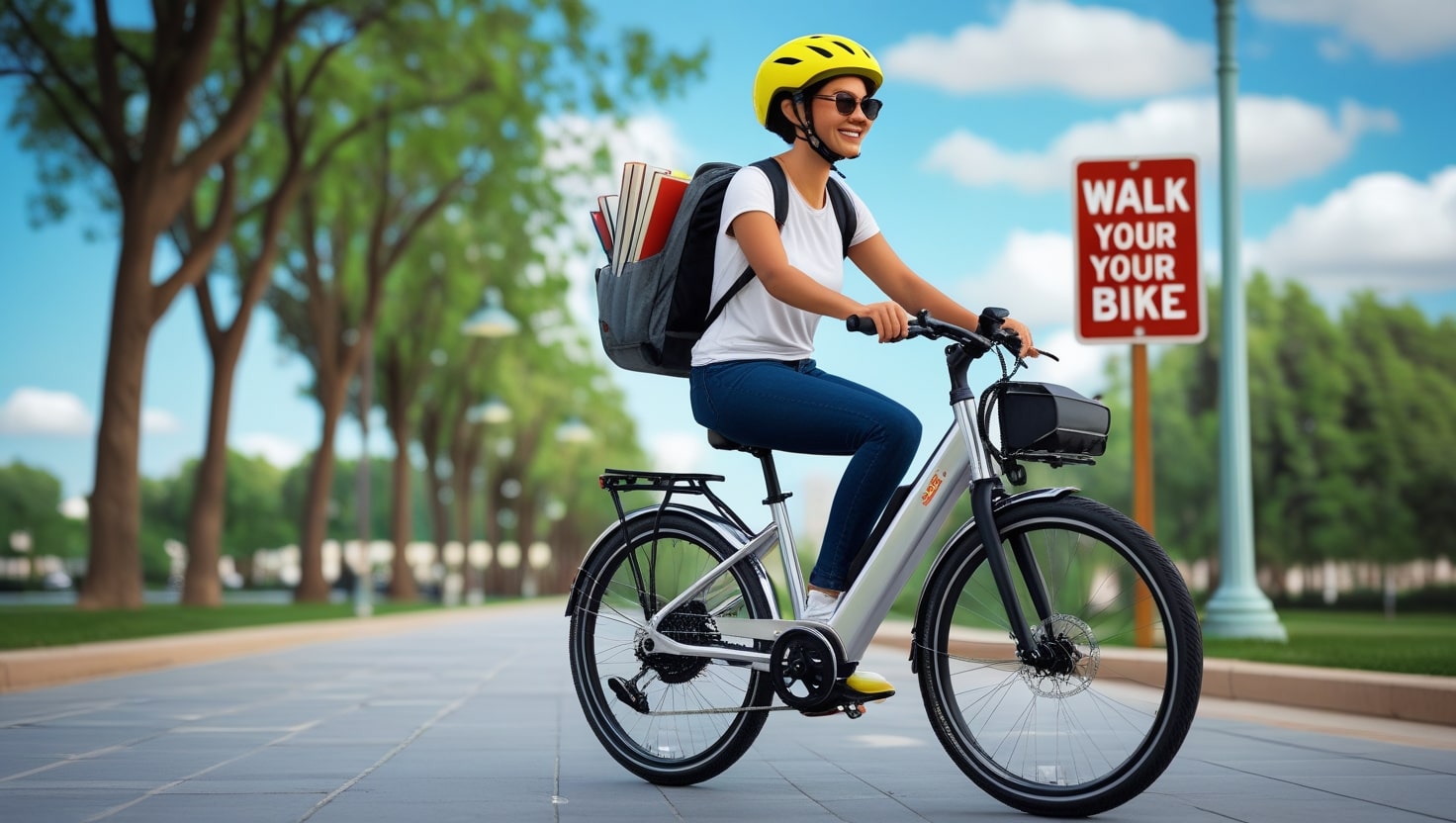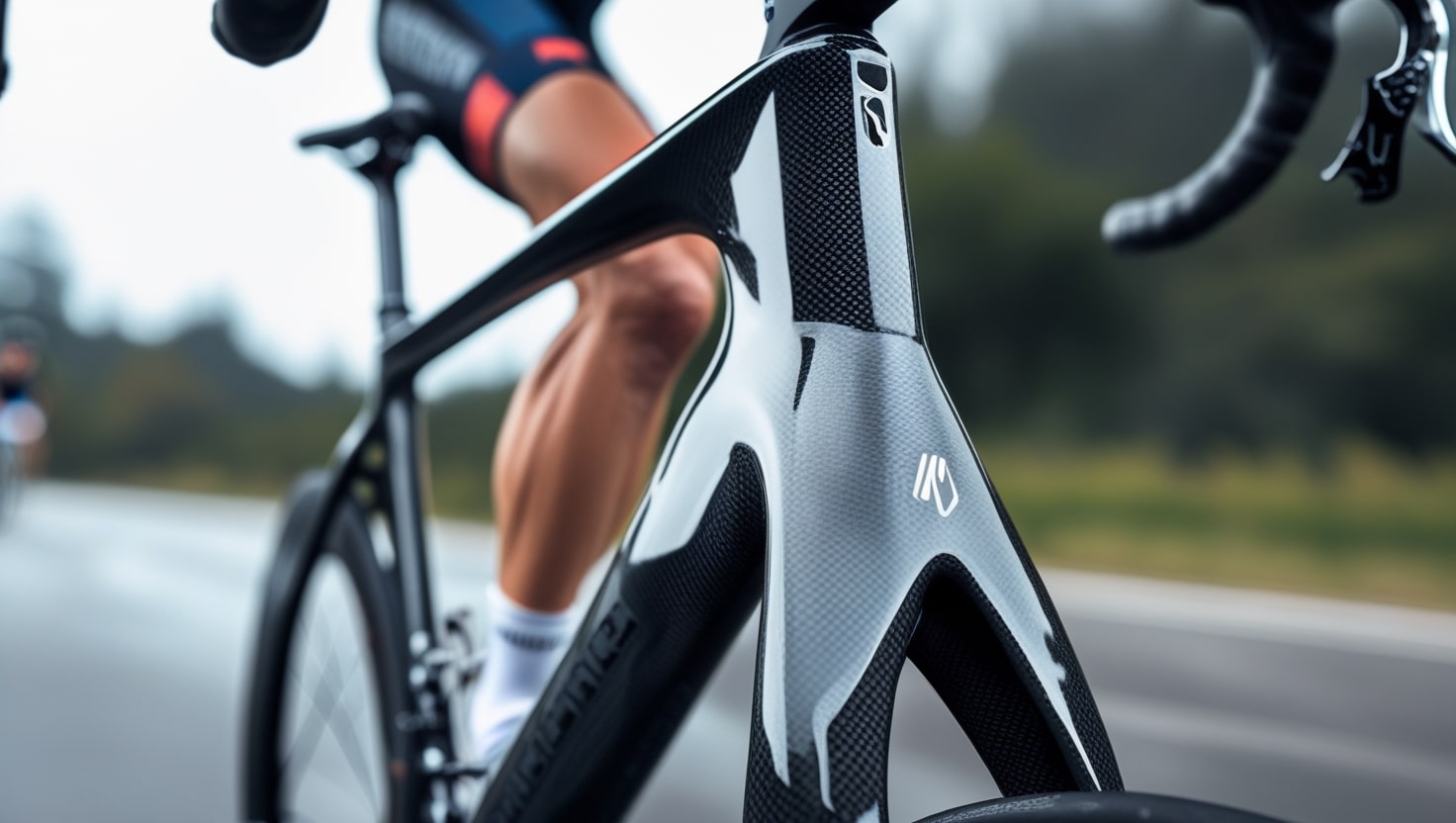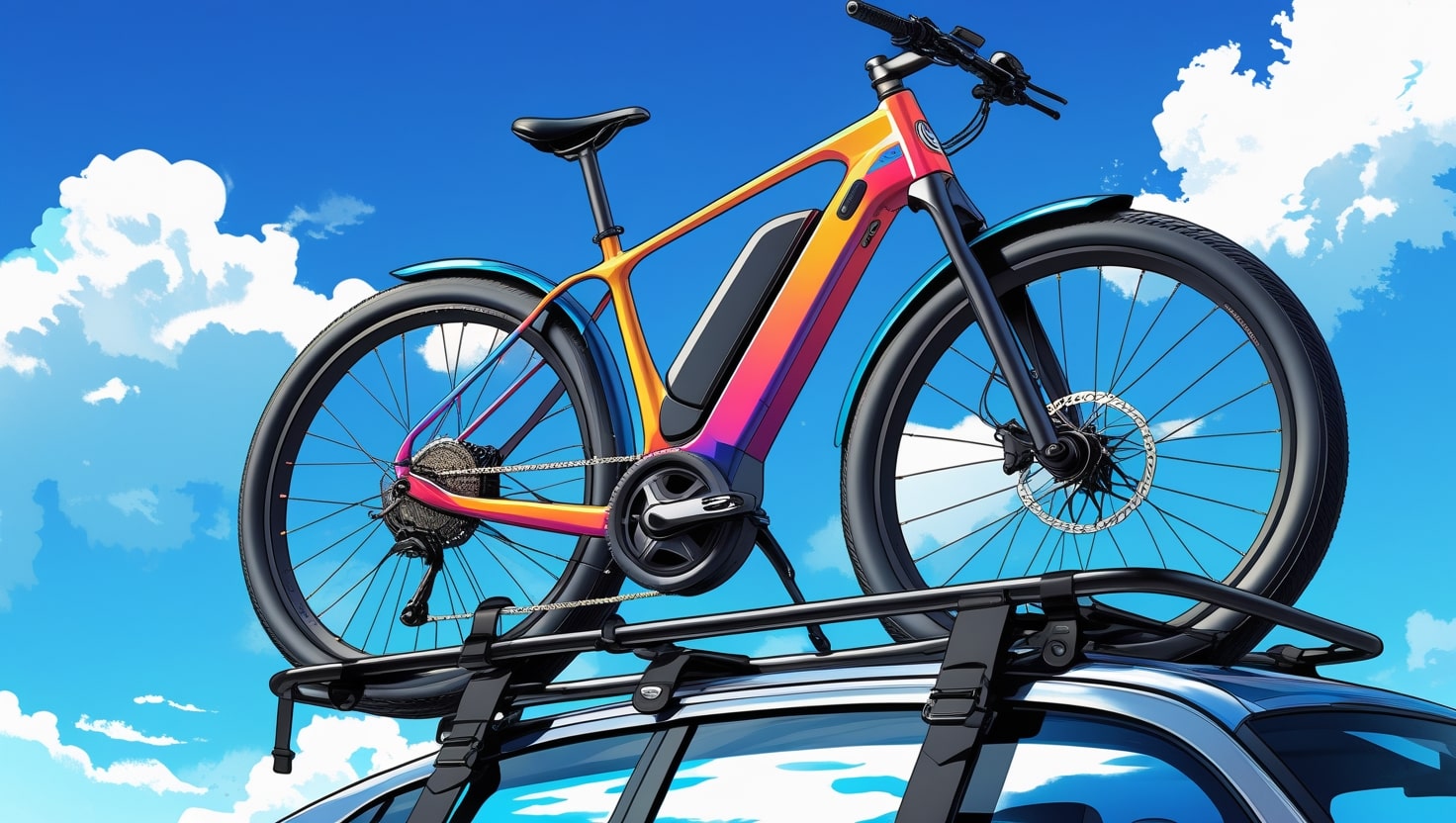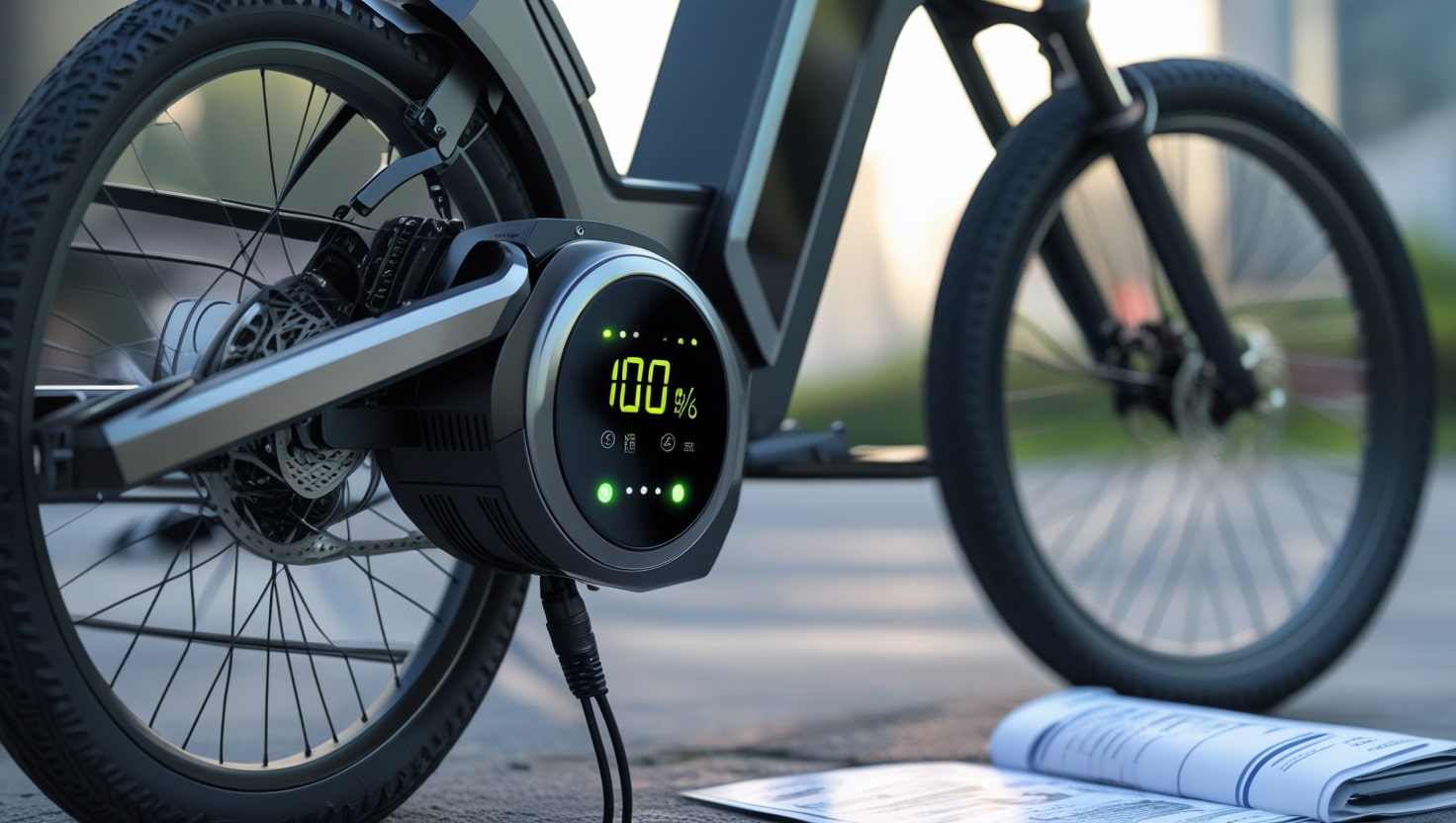Back when I was hunting for a bike online, I nearly bought one off Craigslist that seemed like a dream deal—until I did some digging. In the U.S., a bicycle is stolen every 30 seconds, which adds up to over 2 million bikes a year. With so many second-hand options flooding online marketplaces, it’s easy to unknowingly end up with a stolen ride.
This can lead to serious legal issues, wasted money, and the frustration of having your new bike confiscated if the truth comes out. From my own experience, knowing how to check if bike is stolen is essential—look for registration numbers, ask for receipts, and trust your gut when something doesn’t feel legit. The truth is, skipping these checks just isn’t worth the risk.
Make sure you know how to check a bike’s history and make sure it’s clean before you buy it with this essential help.
Always look for the bike’s serial number, which is typically located close to the crank or rear frame. It serves as a kind of distinctive fingerprint that makes it easier to identify the bike.
Use trusted online resources for checking if the bike has been reported stolen—this step is easy and free on most platforms.
Look out for warning signs in any second-hand deal, like mismatched parts, no receipt, or an overly eager seller—these are red flags you should watch for.
Take the right steps to protect yourself by asking questions, getting proof of ownership, and doing these practical checks before finalizing the deal.
When you buy something, whether it’s from a nearby person or on the internet, these safety tips will help you make a smart, safe choice and keep you from getting stolen goods by accident.
How to Check if a Bike is Stolen Before You Purchase
Before you buy a used bike, take essential steps to safely go through the process and avoid the risk of ending up with stolen property.
Find and note the serial number first, then confirm it using reliable sources such as Project 529 Garage or Bike Index.
Watch out for red flags such as suspiciously low prices or a tampered serial plate—these are signs something’s off.
Always request proof of ownership and check for unique features that match what the seller claims.
After you purchase, consider installing a GPS tracker to boost security, especially if you plan to sell the bike later.
Why It’s Crucial to Check if a Bike is Stolen Before You Buy
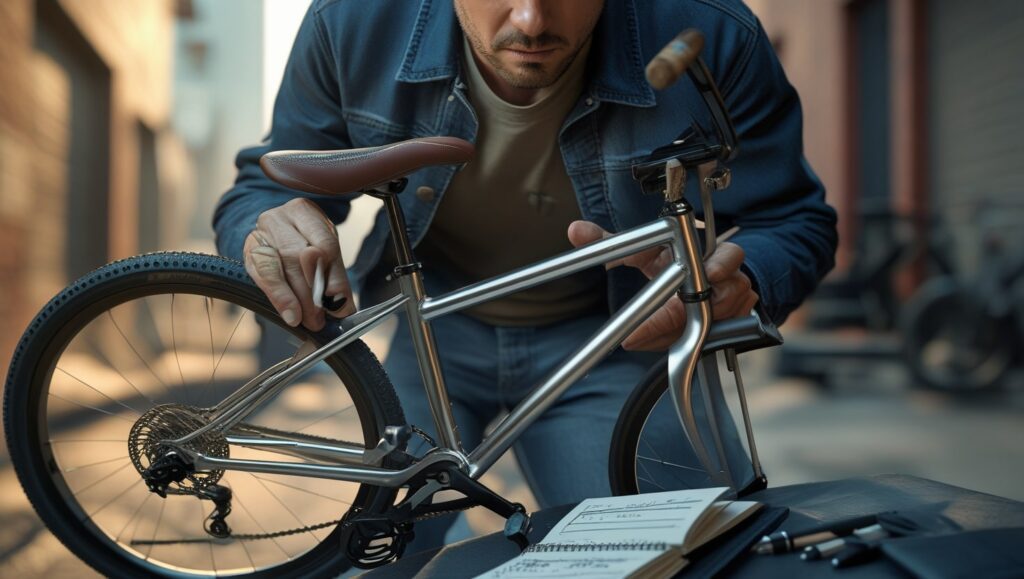
A few years ago, I almost made a purchase that could’ve cost me more than just money—it was a lesson in being smart when buying a bike. With theft rising fast, it’s essential to double-check everything to avoid serious legal issues or unexpected financial loss. A stolen bike not only puts your safety at risk but also affects the broader community, making it less secure and safe for others. If you’re adding to your collection, even one wrong move can end in a police call or worse.
The Real Impact on Buyers and Cyclists
It’s not just a mistake to buy a stolen bike; it can cause real problems with long-lasting effects.
Legal Trouble: Owning a stolen bike, even unknowingly, can land you in serious legal hassles. If the bike gets identified as stolen, it may be seized by law enforcement, and no receipt will save you. You’ll be stuck with a situation you didn’t plan for, just from one bad purchase.
Financial Loss: A stolen bike could be confiscated, and that means losing both your ride and the cash you spent. Unlike a shady deal on eBay, there’s usually no refund or second chance to get your money back. That’s a painful loss, especially when the property is gone and you’ve poured in effort trying to save a few bucks.
An Emotional Sting: Discovering your bike was stolen leaves an emotional sting. It feels like a deep betrayal, shakes your trust in the process of buying used, and makes you question future deals. If cycling is part of your routine, this kind of buyer’s remorse can throw everything off track.
Why the Market Can Be a Minefield
Although there are many alluring deals to be found in the second-hand market, stolen bikes are also frequently found there. Investigating a bike’s past is crucial for this reason.
Stolen Bikes are Out There: Many thieves try to offload stolen bikes through online marketplaces, yard sales, and even certain shops. They rely on buyers skipping the background check so they can make a quick sale without raising alarms.
Verification Saves You Headaches: Doing a proper verification isn’t just a formality—it helps you confirm the bike’s status and know it’s legit. That small step goes a long way in protecting your wallet and ensuring you’re buying with a clear conscience.
Watch for Red Flags: Watch closely for warning flags like vague descriptions, suspiciously low prices, or a seller who can’t provide proof of ownership or documentation. These are common giveaways that the deal might not be as clean as it seems.
How to Check a Bike's Serial Number for Theft History
Before buying any bike, one of the most important steps you can take is to find its serial number, which acts like a unique fingerprint. This number is traceable and often holds the key to verifying the bike’s history. You can use it to check if the bike has been reported stolen, which helps you avoid major pitfalls like getting stuck with a bike that’s not truly yours. I always tell buyers to confirm the bike’s legitimacy through free databases—it’s simple and could save you from a lot of trouble.
1. Locating the Serial Number
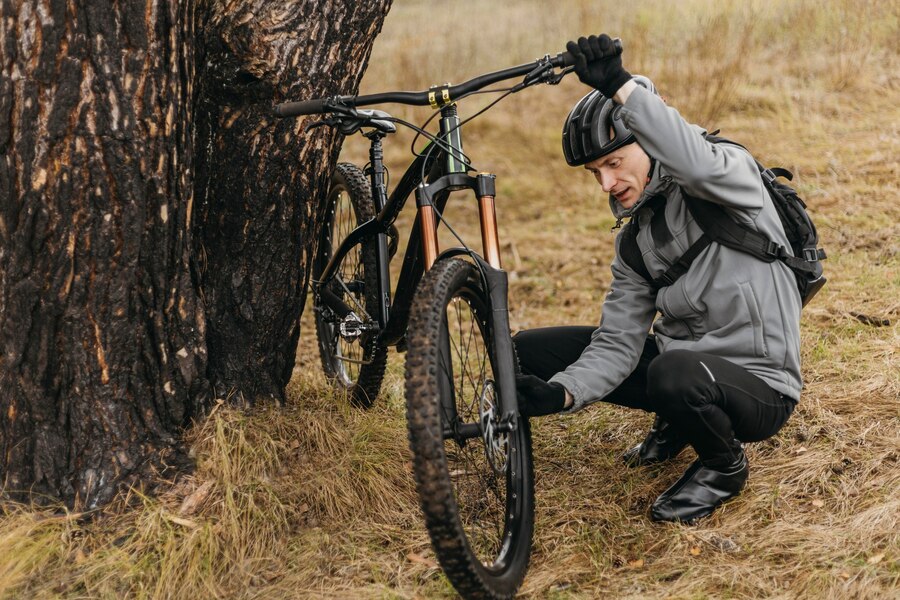
Consider a bike’s serial number, which is usually between six and ten characters long, as its unique identification tag. Here’s where to locate it:
Bottom Bracket (Most Common): To begin, turn the bike over and look for the serial number on the frame area close to the pedals. Many newer models of bikes have this number placed close to the bottom bracket.
Head Tube: If you don’t see it underneath, look at the front of the bike near the fork and handlebars. Either the side or the back of the head tube may have the number engraved on it.
Rear Dropout: Another place to check is the connection point by the rear wheel, called the rear dropout. This is more prevalent on custom or older bikes where the serial number may be harder to see.
Alternative Locations: Certain brands imprint the serial number in odd places, such as the crank arms, seat tube, or seat post. If you’re unsure, use online guides for your model to find the likely location.
2. The Role of Serial Numbers
Similar to a fingerprint, a bike’s serial number serves as a distinct identifier that connects it to its original owner. This is why it’s so crucial:
Ownership Verification: Verifying a bike’s serial number is a crucial step in determining whether it has been reported stolen. It’s a standard part of confirming ownership and the legitimacy of what you’re about to buy.
Aiding Recovery: If your bike ever goes missing, having the number on file greatly boosts your chances of recovery. Law enforcement and bike registries use serials to match recovered bikes back to their rightful owners, making it easier to prove it’s yours.
Verification Tip: Be sure to use internet databases such as Project 529 Garage or Bike Index to verify the serial number. These tools will notify you if it has been detected, and this easy trick might prevent you from purchasing a stolen bike.
3. Red Flag Alert
Is the serial number rubbed out or hardly visible, or can’t you discover it? That is a clear indication that something may be amiss.
Tampered Serial Number: A broken or missing serial number is frequently an obvious clue that the bike may have been stolen. Some thieves may scratch off or alter the number to avoid detection, leaving behind a tampered or suspicious spot.
How to Proceed: Ask the seller for evidence of purchase, registration paperwork, maintenance records, or anything else that can verify ownership if you see a warning sign, such as a changed or missing serial number. If their story doesn’t add up, it’s smart to walk away without second-guessing.
The Best Online Resources to Check if a Bike is Stolen
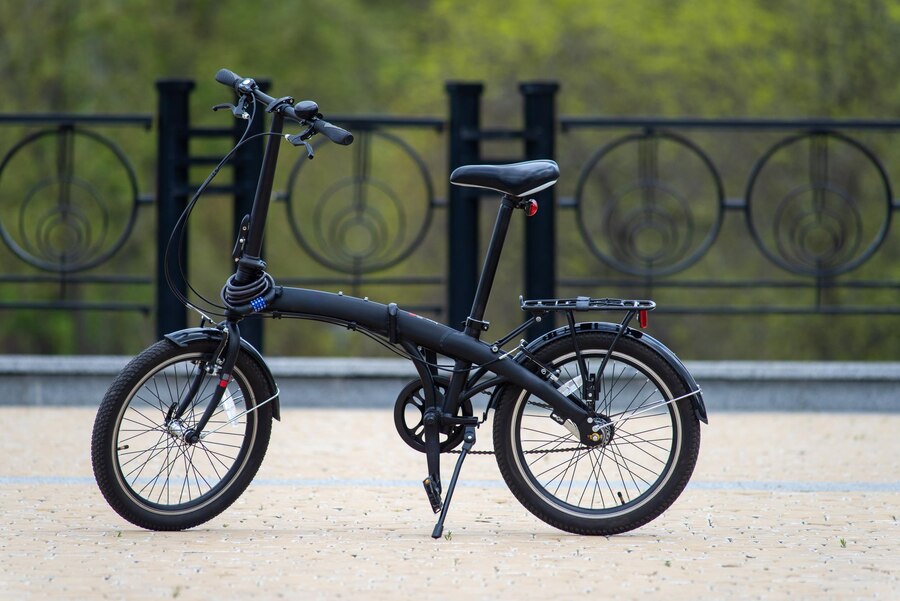
When I started buying used bikes, I quickly learned that checking databases is a must for verifying if a bike is stolen. There are reliable resources out there built just for this, and they’re super easy to use. These tools can help you avoid the risk of ending up with stolen property, which is a headache no rider wants.
1. Bike Index
Bike Index is one of the largest bike registries in the U.S., and it’s a tool I always recommend to friends who are buying second-hand bikes. It helps users register their bikes, report if they’ve been stolen, and check whether a bike has been flagged in a theft case. What makes it great is how it supports both owners and local communities by making stolen bikes easier to track.
Features
Free Registration: Bike Index makes it easy for owners to list their bikes with free registration, keeping it accessible for everyone no matter the budget.
Theft Reporting and Recovery: The platform’s community-driven approach increases the likelihood of recovering stolen bikes and enables users to report them promptly.
Community and Law Enforcement Partnerships: The likelihood that a stolen bike will be recovered increases when the community, neighborhood bike shops, and law enforcement work together.
How to Use
The first step in finding useful information is entering the bike’s serial number into the Bike Index website.
You’ll see any matching listings, including bikes that have been reported as stolen, giving you a clear warning before purchasing.
After the check, think about registering your own bike—it’s free and helps support the community in protecting other bikes too.
2. Project 529 Garage
Project 529 Garage is a robust platform built for bike registration, theft reporting, and sending real-time alerts to help track down stolen bikes. It’s widely used across North America and is known for its strong community-driven recovery efforts. What sets it apart is its deep partnerships with local authorities and community groups, making it much easier to find and reclaim lost bikes through a network of trust and collaboration.
Features
Mobile App: The Project 529 mobile app gives you quick access to report or check your bike anytime, anywhere. It allows users to take action instantly, which is a big help when time matters.
Real-Time Community Alerts: Members of the local community receive real-time warnings when a bike is reported stolen, increasing the likelihood that the bike will be found quickly.
529 Shield Stickers: These tamper-resistant stickers come with a scannable code that acts as a theft deterrent. When scanned, they quickly reveal ownership details and connect the bike to its rightful owner.
How to Use
To confirm it, enter or scan the bike’s serial number after installing the Project 529 app on your device.
If the bike has been reported as stolen, you’ll see the details clearly displayed within seconds.
For extra security, think about putting a 529 Shield sticker on your own bicycle.
It helps deter theft and makes it easier to register and identify your bike in case of an incident.
3. Bike Register
One of the most popular registries in the US is Bike Register. and U.K., making it a reliable tool for checking if a bike has been reported stolen across different regions. This platform takes a networked approach to help prevent theft and recover bikes faster, thanks to strong involvement from law enforcement.
Features
High-Risk Marking: Users can label their bikes as high-risk, which boosts visibility and makes it easier for law enforcement and others to spot and act on suspicious activity. This kind of marking increases the risk for thieves and lowers your chance of losing your bike.
Law Enforcement Connections: Since Bike Register has direct ties to law enforcement, helping with the recovery process is made simpler. Their partnerships with law enforcement are a strong advantage when dealing with stolen bikes.
Security Tags: You can purchase special security tags that show your bike is registered. These tags are designed to deter theft by being clearly visible and act as a warning to potential thieves.
How to Use
To quickly see if a bike has been flagged, visit the Bike Register website and input the bike’s serial number.
Check for any high-risk indicators or theft reports connected to that bike. These signals are key when deciding whether to move forward with a purchase.
To boost your own protection, register your own bike and consider adding a security tag for added peace of mind.
How to Use These Databases

Visit the Website or App: To get started, open Bike Index, Project 529 Garage, or Bike Register on your computer or phone, or just install the app. These platforms are designed for easy lookups and are helpful tools for identifying a stolen bike.
Enter the Serial Number: Use the platform’s search or tool feature to input the serial number of the bike. Add details like brand, model, or color for a better match. The more information you include, the easier it is to get accurate results.
Review the Results: After submitting the data, carefully review the results. If a bike has been reported stolen, you’ll see info like the date, location, and theft status. But even if no match appears, use your best judgment—some cases may not be logged.
For Further Verification: Some platforms, especially Project 529 Garage, allow users to connect with the local community. Users in the vicinity may receive alerts when a stolen bike is seen. Registering your own bike not only gives you peace of mind but also helps support the wider cycling world and prevent future theft.
Related: Dirt Bike VIN Checks Made Easy
Warning Signs of a Stolen Used Bike
When shopping for a bike, whether online or in person, trust your instincts if something feels off. Be cautious if the listing has vague details, no photos, or suspiciously low pricing—these are classic red flags. Asking smart questions can uncover hidden signs and help you avoid legal trouble or a major financial hit. If the offer seems too good to be true, it likely isn’t legit, so rely on your gut and don’t ignore what looks shady.
Signs of a Potentially Stolen Bike
Suspiciously Low Price: A seller offering a bike at a price far below market value might be trying to offload stolen goods in a quick-sale tactic. Always compare prices with similar models to see if the deal makes sense or raises a red flag. Approach any unusually cheap bike with caution.
Vague or Inconsistent Details from the Seller: If a seller gives vague, inconsistent, or confusing answers, cannot share the year, place it was purchased, or other basic information, it’s likely they don’t actually know the bike — possibly because it’s not legitimate. These unclear responses are major signs something may be wrong.
Signs of Tampering Near the Serial Number: Check the bike’s serial number for tampering like scratches, dings, or attempts to remove or alter the digits. If it’s hard to read or missing, that may indicate the bike was obtained illegally.
Seller Refuses to Meet in Public: A legit seller usually agrees to meet in a neutral, public location. If they insist on somewhere unusual, are reluctant to share contact info, or tell you to proceed carefully, it’s best to walk away.
No Proof of Ownership: A trustworthy seller should offer documentation like a receipt, proof of purchase, or ownership papers. If there’s no ownership trail, that’s another red flag.
Key Questions to Ask the Seller
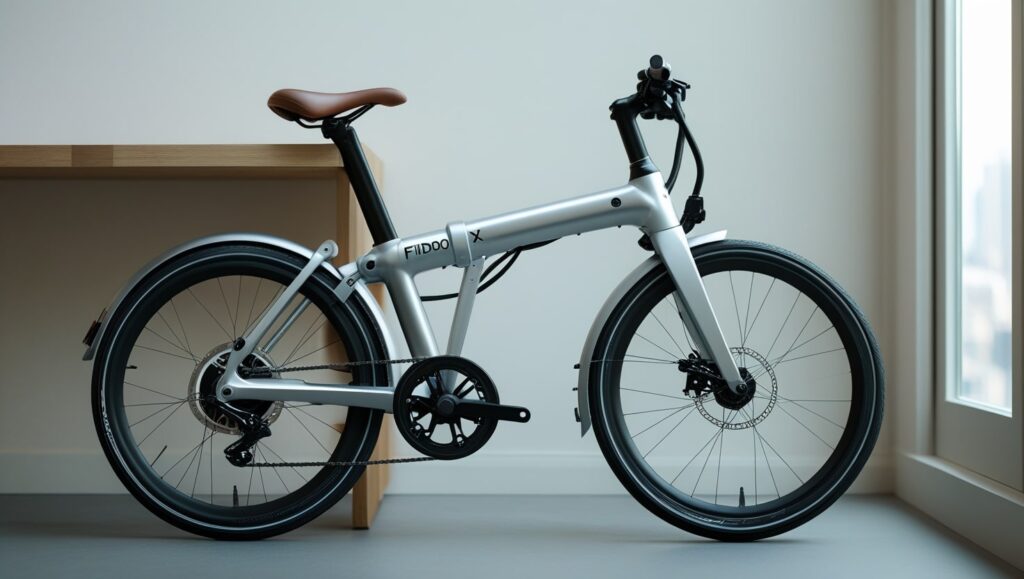
Try asking the seller these straightforward questions to gain a better understanding of the bike’s history:
“Do you have proof of purchase or a receipt?”: This simple question helps reveal whether the seller is legitimate. A real owner will usually have proof, a purchase record, or a receipt. If they hesitate or avoid the topic, it might be a sign the bike was taken by a thief.
“Can you tell me about the bike’s history?”: Ask for details like the bike’s purchase location, any modifications, service records, and usage history. Vague or inconsistent answers are a flag that the history might be made up.
“Why are you selling the bike?”: A genuine seller will have clear motives like needing money or upgrading to a new model. But if you hear odd explanations, feel hesitations, or it sounds off, that could be suspicious.
“Can I see the serial number?”: Request that the serial number be examined to make sure it is visible and undamaged. If the seller gets defensive, refuses, or reacts oddly, take that as a warning sign.
Quick Reference List: Common Red Flags
The seller offers the bike at an unusually low price without explanation, which can be a sign something’s off.
They give vague or inconsistent information, especially when you ask basic questions about the bike’s background.
The serial number is missing, scratched, or hard to read, making it difficult to confirm its legitimacy.
The seller avoids meeting in a public place, which is unusual for safe and honest exchanges.
There’s no proof of ownership or official documentation, leaving you with no way to verify the bike.
The seller hesitates or reacts negatively when you ask direct questions about the bike’s condition or origin.
Smart Steps to Take Before Committing to a Bike Purchase
By exercising caution before purchasing a bike, you can avoid having your belongings stolen. To ensure that your next purchase is risk-free and legitimate, adhere to these important guidelines.
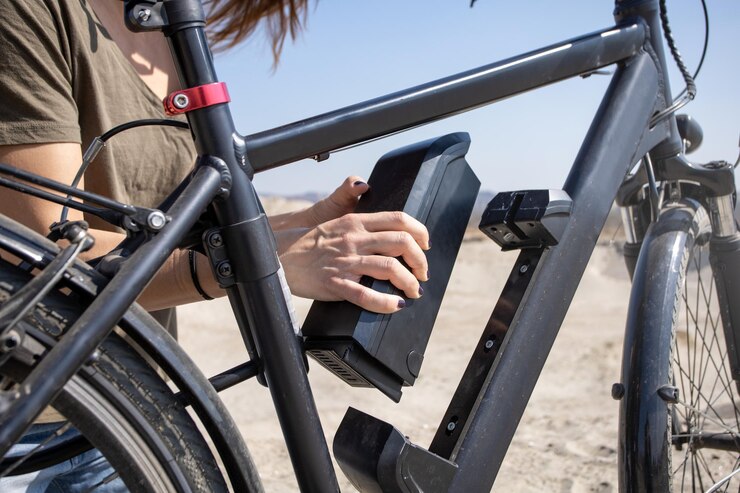
1. Check the Bike’s History
A little background check can have a significant impact. You can find out if the bike or seller has a stolen report associated with them by searching the serial number in reliable databases such as Bike Index, Project 529 Garage, or Bike Register.
Step-by-Step:
Start by locating the serial number on the bike—check the bottom bracket, head tube, or rear dropout. Then go to one of the trusted online databases and enter the number using the search function.If the bike is reported as stolen, the platform will typically display crucial details including the location, the date of the theft, and the contact details of the bike’s rightful owner.
Why This Matters:
A quick, free check through a database is one of the most effective ways to see if the bike has been flagged due to theft. It’s a smart step-by-step move that brings peace of mind and adds an extra layer of safety before your next purchase.
2. Request Documentation
One simple yet important method to verify who owns the bike is to ask the registered owner for paperwork. Here is what you ought to look for:
Bill of Sale: Always ask for a formal document like a bill of sale, which records the transfer of ownership.The make, model, and serial number of the motorcycle should be listed, along with the seller’s details and the date of purchase. This paperwork adds legitimacy to the transaction and shows that everything is aboveboard.
Proof of Ownership: A genuine seller should have original documents like receipts, registration, or a proof of sale. Many owners register their bikes through programs or dealerships that issue certificates as added documentation.
Maintenance Records: Bonus points if the seller has maintenance records or repairs logged. These records give insight into the bike’s history and show that the owners have taken care of it responsibly.
3. Verify Distinguishing Features
Many motorcycles have unique information that can be used to match stolen bike reports and verify ownership. Here’s what you need to focus on:
Custom Parts: Ask the seller if the bike has any custom or customized parts, like upgraded wheels, modified handlebars, or unique saddles. These kinds of add-ons are great markers to note and could help you identify the bike later if it’s reported stolen.
Stickers or Decals: Many cyclists personalize their bikes with stickers, decals, or paintwork. These distinctive touches act as easy visual identifiers. Be sure to record any details that stand out.
Wear and Tear Marks: Look for scratches, dings, or other visible marks that show the bike’s history. When examining listings, photos, or summaries of motorcycles that might be stolen, these distinguishing characteristics might serve as a helpful benchmark.
Pro Tips to Keep Your Bike Safe and Theft-Free
To protect your bike over the long-term, it’s smart to go beyond just purchasing safely—start by taking simple but effective preventive measures. Always verify the legitimacy of any deal before buying, and consider investing in advanced security tools like high-quality locks or GPS trackers. Stay connected by connecting with your local cycling community, which can alert you to any sketchy listings in your area. These steps not only help prevent theft, but also keep your ride safe and secure for years to come.
1. Join Community Networks for Reporting
One of the best ways to stop and deal with bike theft is to join local riding groups. These communities can help you in the following ways:
Local Cycling Groups: Get involved with local cycling communities through online or offline groups, especially those that use WhatsApp, Telegram, or social media. These networks often help members share information about stolen bikes, suspicious listings, or recent theft activity in your area. Staying connected keeps you ahead of risks.
Online Forums and Facebook Groups: Join platforms like Facebook, which host forums and groups for cyclists in different regions, such as “Bike Commuters” or “Stolen Bikes Alert.” These posts and trends can keep you updated and let you share your own alerts if needed.
Local Bike Shops and Clubs: Many shops, clubs, and small businesses actively help with theft prevention. They may keep a log of stolen bikes, hand out flyers, or offer discounted security accessories. Building a relationship with them adds extra support and a valuable layer of protection.
2. Consider GPS Trackers and Smart Locks
It’s a good idea to use a GPS tracker or smart lock to keep tabs on your bike’s whereabouts and deter thieves; this is especially helpful if your bike is valuable.
GPS Trackers: These tiny devices mount directly to your bike and allow you to track its location in real time. This explains why they are so effective:
Stealthy Placement: Some GPS trackers are built for stealthy placement, designed to stay hidden inside the bike frame so thieves can’t easily spot them. This discreet setup gives you a better chance of keeping your bike safe without drawing attention.
Real-Time Tracking: Using real-time tracking apps, you can monitor your bike’s location directly from your phone. If it gets stolen, this powerful feature helps you and law enforcement pinpoint its location quickly and boost the odds of recovery.
Popular Models: Some trusted models include the Tile Sticker, Apple AirTag (with an attachment for bikes), and Invoxia—each offers strong GPS tracking solutions with solid reputations.
Smart Locks: For further security, consider employing a smart lock in addition to your standard lock. They are a wise choice for the following reasons:
Keyless Convenience: Smart locks with Bluetooth, fingerprint, or keypad entry let you unlock your bike without keys. This keyless convenience means there’s nothing to lose, and they’re harder to pick, making them more secure and easy to operate.
Theft Alarms: Some smart models have built-in alarms that trigger if someone tampers with the lock or tries to move your bike. These alarms can instantly alert you through a mobile app and help deter theft attempts.
Popular Smart Lock Brands: Popular names such as Seatylock, Linka, Lattis, and Ellipse provide models equipped with keyless entry, GPS tracking, and anti-theft alerts to enhance your bike’s security.
Protect Your Purchase and the Cycling Community
Before buying a used bike, taking proactive steps like verifying the serial number through trusted databases can protect you from unexpected costs, legal issues, and possible disappointment. A quick check and a simple glance at records or theft alerts from local sources can help avoid future headaches. By connecting with networks and staying informed, you’re not only protecting your investment but also helping build a stronger cycling community. Making sure the bike’s legitimacy is clear means you’re doing your part to contribute to a safer space for riders. It makes a real difference in finding a bike you can ride with complete confidence—one that’s rightfully yours and free of any trouble.
Quick Takeaways to Remember for a Safe Purchase:
Verify the Serial Number: Before anything else, check the bike’s ID and make sure the serial number checks out against official records. A legitimate bike should match the original registration.
Use Online Databases: Use resources like Project 529 and Bike Index to help with your search.
These databases help you spot red flags that may indicate the bike has been reported stolen.
Stay Cautious with Used Bike Sales: If you’re buying a used bike, be cautious of suspicious pricing, a sudden sale, or missing documentation. These can be signs the seller may not be trustworthy.
Request Proof of Ownership: Always request a bill, receipt, or any documentation linking the seller to the bike. This proof of ownership adds a layer of safety and confirms the deal is legit.
Related: How Are Bike Frame Sizes Measured
FAQs: how to check if bike is stolen
1. Can I check if a bike is stolen without the serial number?
Yes, it’s possible—but more challenging. When a bike doesn’t have a visible serial number, you’ll need to rely on other signs. Start by asking the seller for proof of ownership, such as a receipt, registration, or maintenance records.
Another helpful step is looking for unique features like custom parts, decals, or anything that stands out. Take clear photos and cross-check them with stolen bike reports found on local or national platforms, including Facebook groups, cycling forums, or other dedicated community pages. While this isn’t foolproof, it can help narrow down suspicions. Still, a serial number remains the most reliable way to verify a bike’s history.
2. What should I do if I unknowingly bought a stolen bike?
If you find out the bike you bought is stolen, you should immediately contact your local police department and explain the situation. Be ready to share details about the seller and show any documentation, such as a receipt, to prove you bought it in good faith. Regretfully, the bike might have to be given back to its original owner. Acting quickly and honestly can help you avoid serious legal consequences and show that you acted in faith rather than with intent to deceive.
3. Are online marketplaces safe for buying used bikes?
Buying from online marketplaces can be safe if you take smart precautions. Before making any decision, always check the seller’s profile, reviews, and activity history for any strange signs that question their legitimacy. It’s best to meet in a public area and ask for proof of ownership before paying. Use reliable websites such as Project 529 Garage or Bike Index to confirm the bike and its serial number.


